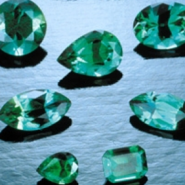As a diamond consumer, you’ve probably heard the term “diamond treatment” or “treated diamond,” or perhaps “enhanced diamond” and wondered what that meant. A relatively small percentage of gem-quality diamonds are treated and they are treated for two reasons: to improve clarity or to alter color.
Read More >>Synthetic diamonds grown in a lab are virtually identical to natural diamonds, but that’s where the similarities end. In fact, there are two distinctive methods used to grow synthetic diamonds.
Read More >>Contrary to what many people may think, the word “synthetic” does not mean fake when it comes to gemstones. The term actually comes from the Greek word for “to put together.” People “build” or, more accurately, “grow” synthetic crystals.
Read More >>Synthetic diamonds are grown in a laboratory and have essentially the same chemical composition and crystal structure as natural diamonds formed millions of years ago. In the last 30 years, gem quality synthetic diamonds have been grown in Japan, South Africa, Russia, Ukraine and the United States. Synthetic diamonds are generally produced using either High Pressure/High Temperature (HPHT) or Chemical Vapor Deposition (CVD).
Read More >>As you’ve searched for the perfect diamond, you may have learned about high pressure/high temperature diamonds, or HPHT. These are diamonds that have been treated via temperature or pressure to look better than they were naturally. Jewelers are required to provide full disclosure on HPHT stones to their customers.
Read More >>


